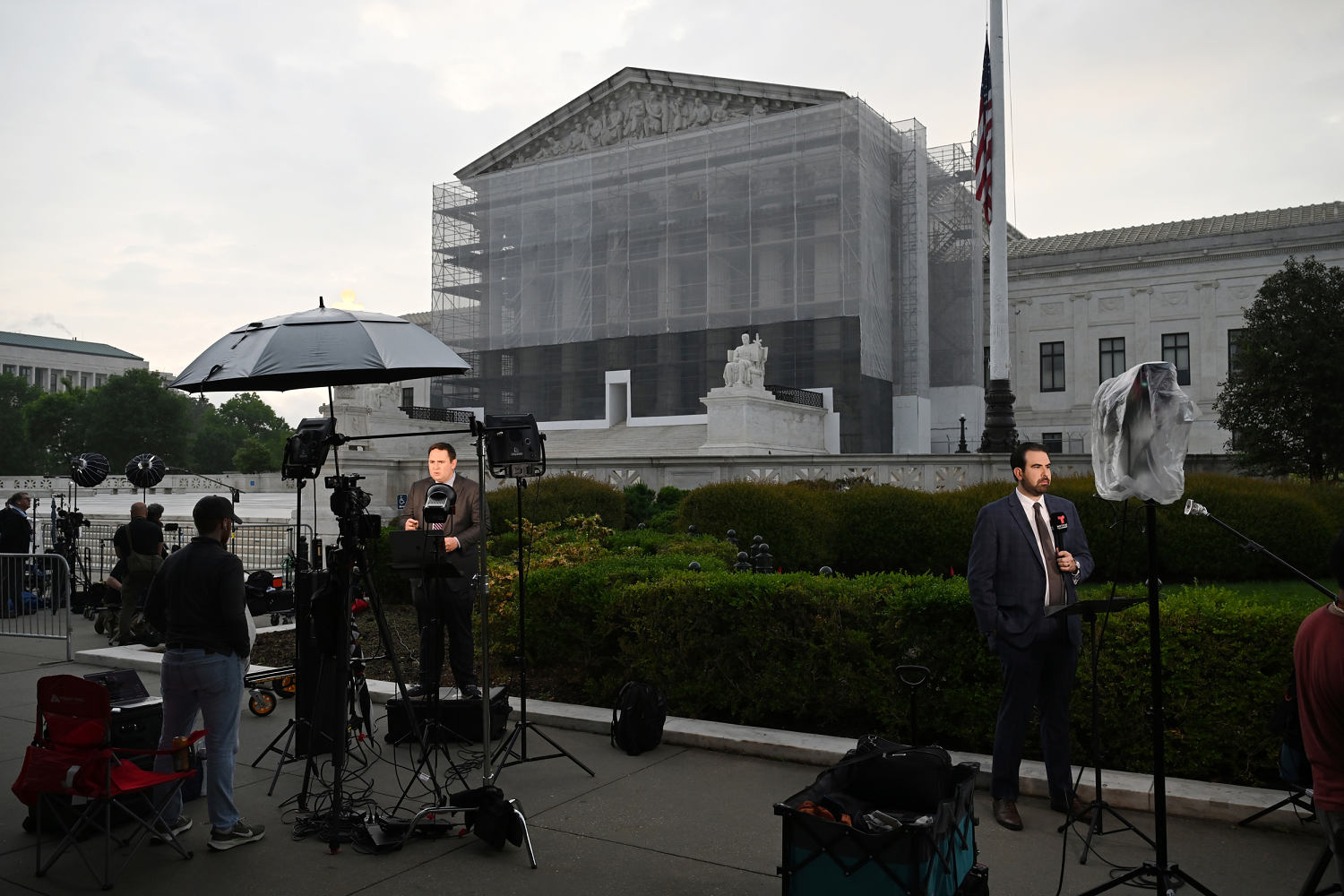
WASHINGTON — The beginning of June marks the start of the traditional monthlong ruling season at the Supreme Court, when the justices hand down decisions in their biggest and most contentious cases.
But this year is different.
President Donald Trump’s second term has disrupted the court calendar, with the nine justices now spending as much time, if not more, juggling consequential emergency cases that need to be handled quickly as they do on the regular docket of cases that have gotten months of attention and deliberation.
“It underscores the degree to which Donald Trump and the Trump administration are sucking all of the oxygen out of the room,” said Leah Litman, a professor at the University of Michigan Law School and the author of a new book about the court, “Lawless.”
This can affect the public’s knowledge and understanding of what the court is doing in part because media organizations are used to devoting additional resources to coverage during June that are not necessarily available at other times of the year, she added.
It also changes the normal rhythms of the court’s operations. The court announces ahead of time when rulings in argued cases are expected, and they are always issued at 10 a.m. But emergency decisions can drop at any time of day, with no advance notice. One recent decision was released in the early hours of a Saturday morning.
Nearly all the emergency cases are related to the administration’s aggressive interpretations of federal law in executive orders that have regularly been blocked by federal judges.
As June begins, the Supreme Court has 33 cases to decide out of 62 on the so-called merits docket. Those are the cases in which the justices heard arguments in the current nine-month term, which started in October, and would be expected to decide by issuing lengthy written decisions. The next scheduled ruling day is Thursday.
In the meantime, the court since January has already issued rulings of some description in 11 Trump-related emergency cases via what has been dubbed the “shadow docket,” and it has several others pending. These are cases in which the justices do not generally hear oral arguments, and they are often decided by brief court orders without the lengthy, detailed reasoning associated with major Supreme Court decisions.
But the shadow docket decisions can be just as practically important as the cases decided on the merits docket, sparking concerns about transparency and process.
This term’s big Supreme Court decisions
Via the shadow docket, the court has already allowed Trump’s ban on transgender people in the military to go into effect, given a green light to the firing of independent agency members, and approved the administration’s removal of legal protections for thousands of Venezuelan immigrants.
The justices have also put the brakes on an attempt by the administration to use a wartime law to deport Venezuelans it claims are gang members and ordered Trump to “facilitate” the return of Kilmar Abrego Garcia, who was wrongly sent to El Salvador.
On Friday, the court allowed the Trump administration to revoke legal protections for more than 500,000 immigrants.
In the meantime, the docket of merits cases has a relatively small number of headline-grabbing cases compared with previous years.
Of those cases yet to be decided, the biggest is a challenge to a Tennessee law that bans gender transition care for minors. The court is also set to rule on a conservative religious objection to LGBTQ-themed books in a Maryland county’s schools and an effort by Texas to restrict access to pornographic websites.
By comparison, last June, the court’s rulings included one granting Trump broad immunity from prosecution for events that took place during his first term as president, a trio of rulings that weakened federal agency power, a decision upholding a law that bars domestic abusers from possessing guns, and another rejecting a challenge to the Food and Drug Administration’s approval of the abortion pill mifepristone.
In the summer of 2023, the court within a matter of days ended affirmative action in college admissions and killed President Joe Biden’s student loan debt relief plan.
And the previous summer, the court overturned Roe v. Wade, the landmark abortion rights decision.
How the shadow docket is changing the court
“The emergency docket seems to have almost swallowed the court’s merits docket over the past month or so,” said Greg Garre, a Washington lawyer who regularly argues cases at the court. One case he argued, concerning Oklahoma’s attempt to launch the first religious public charter school, was poised to be one of the biggest of the term. But it ended up fizzling when the court deadlocked 4-4.
In fact, some cases that arise as emergency applications have ended up being converted into merits cases, creating what some view as a “rocket docket” — that is, major cases zooming immediately to the high court instead of taking months or years to navigate the normal appeals process.
“In a few years, we may no longer be able to say that the emergency docket is an ‘irregular’ procedure. It might become the normal procedure for all high-stakes litigation,” said William Baude, a University of Chicago Law School professor who coined the “shadow docket” phrase.
One high-profile example was the court’s January decision upholding a law that was intended to ban TikTok if its Chinese owner did not immediately sell it. The Supreme Court resolved the entire case within weeks after it reached the court via an emergency appeal.
The court also elected to hear oral arguments in a trio of shadow docket cases concerning nationwide injunctions issued by judges that blocked Trump’s plan to end birthright citizenship, in a further blurring of the regular merits docket and the fast-moving shadow docket.
Some Supreme Court watchers have speculated that the justices deliberately kept their merits docket relatively light this term, knowing that there was the possibility of election-related cases in the fall and a potential wave of Trump-related cases if he won the election, based on what happened in his first term.
“I definitely feel like the court is reserving space in its schedule for emergency docket cases involving Trump administration initiatives,” said John Elwood, another lawyer who argues cases at the court.































